Michelin Anakee Wild Tires
Company: Michelin
- They last longer and meet the 150% more mileage claim than other open block tires.
- Off-road performance is as good as any 50/50 adventure tire.
- On-road performance is way better than looking or touching the tire would indicate.
- They will command a higher price.
- Tires are great to argue about and these will fan the already hot ADV tire topic fire.
What it is
Michelin has a new off-road adventure tire in the Anakee Wild. Designed for large displacement off-road touring bikes these tires have a very open block design for off-road performance with on-road durability in mind. Tire engineers at the rollout gave explanations of some of the selling points.
The tires are directional for the purpose of high-speed stability and expected better grip off-road. The knobs are tapered in the direction of travel with leading edge of the knob the narrower edge. This is claimed to put side force on the knobs while moving forward with the purpose of increasing stability. There are side cuts in the knobs (all four sides of the knob) that provide flex relief to the edges of the knobs. The increased flex of the knobs from this feature is also expected to help throw off mud from the tire. There is a “bridge” of raised rubber between the alternating outermost knobs and the adjoining inner knob. This bridge is designed to increase the side stability of the outermost knobs, especially on pavement. Small cuts on the top of each knob are intended to also help throw off mud as well as improve knob flexibility, especially on pavement. The interior surface of the tire carcass has a mottled or “alligator skin” appearance. This varying surface is intended to reduce tire carcass heating while maintaining the design strength of the carcass. The interior surface is intended to allow some flexibility of the carcass which is expected to reduce heating. The “unique tire composition” or compound was not disclosed but Michelin claims to have about 150% of the tire wear life of other tires with the on/off road design. The tires are available in 110/80 and 120/70 19-inch front and 150/70 and 170/60 17-inch rear sizes with more sizes planned. They are priced between $256.95 - $302.53 but like all tires the price varies drastically.
How it works
Dirt Bike Test got hold of two sets of the Anakee Wilds and mounted them on both a 2007 BMW 1200GS Adventure and a 2014 KTM 1190 Adventure previous to the tire intro. Mounting was painless and the tires beaded right up. They weigh in on the lighter side compared to most tires in this market which is a good thing for your bike's handling. We started putting time on them and attended the press introduction to get learned up on the technical points of the tire as well as see where Michelin was placing the tire in the very competitive knobby-type ADV tire market. They are calling it a 50/50 tire, and we agree knowing that having a very open block design is the only way to get traction off-road, especially on the sides of the tire. The mileage claims seemed very optimistic and we set out to find out that as the basis for this whole evaluation. Getting long wear out of knobby-type tires on-road with high horsepower bikes has always been a struggle and is the Holy Grail in this product category.
Straight away we were impressed with the performance of the tire on all surfaces. In reality these tires will spend the majority of their life on-road (at least in mileage terms) and for that they work as good as any 50/50 tire out there. They even work much better than the so called 40/60 (more on-road) that have closer knob pattern but a much harder rubber compound that is downright slippery on road. The Anakee feels like it is a fairly soft compound to the touch but even more so due to how much bite the tire has on slippery pavement. They wander minimally on grooved pavement after the tires have been “scrubbed in” a little bit, at first they moved a little more than we liked. And on the all-important twisties the tires held grip way better than they look like they would, just like some of the best in the class. In fact they allowed riding that was plenty fast for every rider that rode on them--even when asked to compare to the road-going round tires. Hard braking feel was excellent and the tire tracks straight and performs well when the ABS is doing work. Most on-road was done with 32 PSI front and rear but some was done with 27 PSI as well. We did not notice that much loss of traction or confidence in turns or under braking with the lower pressure but the Michelin engineers were definitely against the lower pressure setting in the tire. Tire noise is about average with the open block tires and not an issue for most adventure riders.
In reality DBT was more interested in off-road performance since that is what we really do. And we were impressed again. With such an open block it was obvious that there would be decent grip no matter the type of dirt. Straight line traction is as good as it gets and as you roll over to the side it stays consistent and predictable holding bite as much as a tire holding up a 600-lb. bike can be expected to. With the directional nature of the tire and its shaped lugs running the opposite direction of what one might expect (the chevron lug shapes pointed in the frontal direction, see photos) we thought there might be some unique handling traits that would go along with this. But there was not anything worth noting and most riders could not differentiate between this shaped pattern and the very square cuts and shapes of competitor tires. If anything the trail braking on the rear has the bike staying straight a little more than normal. It is willing to step out under hard acceleration just a bit sooner and begin sliding sooner than other high-end tires but it took a high-level rider and back-to-back testing for any of these traits to show.
Overall tracking on dirt and gravel is very true and confident and when in mud or wet conditions it works just fine. For all the features designed to shed mud build-up we saw no evidence of this being any different than any other tire. In sand it works as good as the best with start and stopping traction being excellent. One big thing that really improves the loose gravel and bump compliance performance of most tires is lowering the pressure to 27 PSI--which is our go-to pressure for mixed riding. The Michelin was not so picky about the pressure and worked just fine at 32 PSI. The tire worked better than most at higher pressures off-road, all the way up to 37 PSI, it did not get harsh or choppy in the bumps as much as we expected.
Now down to the breaking point. What is the durability? For the first 1000 miles we were very impressed and the wear looked minimal. One of the bikes has been used mostly off-road and aggressively at that. At 1500 miles tire looks to be about 30% worn on the rear and the front only at 10-20% with minimal cupping evidence. The more road-going set looked to be at 50% treadlife on the rear and 20% on the front after 3000 miles. This through much over speed limit riding on very hot desert pavement too. But as mileage accumulated the wear slowed and we ended up getting 6000-plus miles to the point the wear bars came into play and we felt the need to replace the rear tire. Off-road the straight line was getting slippery but the knobby sides still worked in soft dirt and when needed in turns. The front looks as if it could easily last for the life of another rear tire and the rearward wear of the knobs was way less than most. We removed the rear tire at 6800 miles as shown in the photos. During the life the tire resisted chunking in rocky terrain and did not blister on excessively hot desert pavement. Most of our testing was unloaded or with minimal loading. Heavy loads and aggressive riders, or those not conscious about spinning will see a reduction in mileage in any tire, the Michelin is no different.
Selling for a suggested retail price in the range of $250-300 a tire the Michelin is in the premium price zone. And it performs that way too. We were very skeptical of the mileage claims but Michelin has delivered here. They were spot-on with the 150% claims compared to the Continental TKC 80s and Kenda Big Blocks we regularly run. Giving an exact figure will be dependent on how you ride but figure they will last longer and perform as you would expect as they wear. Overall we have nothing but positive things to say about these tires.
Support this site by purchasing from the links below:
Leave a Reply

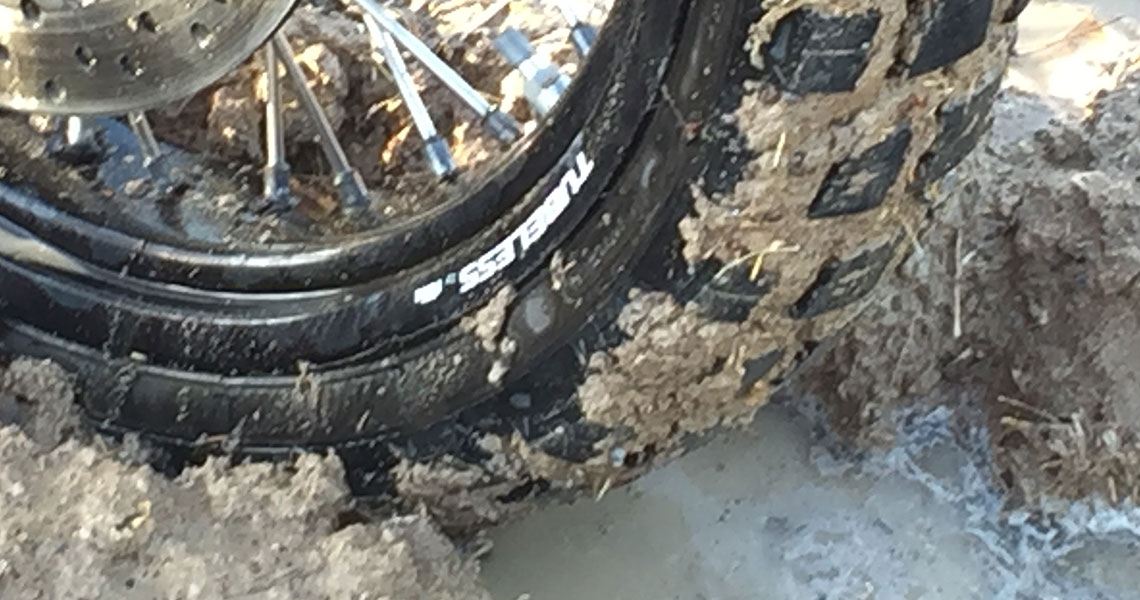
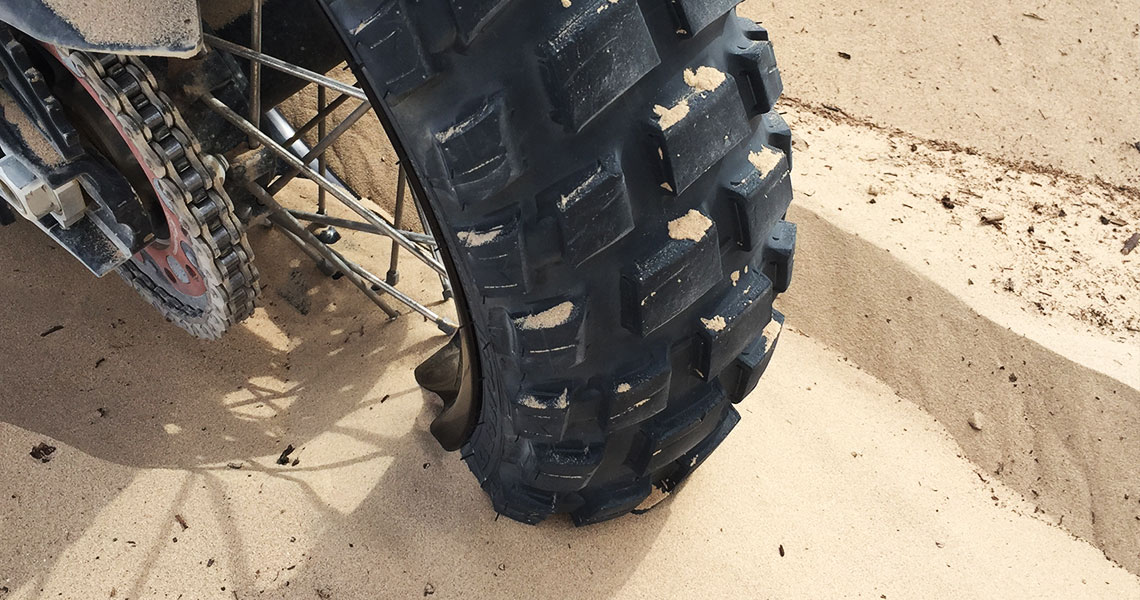


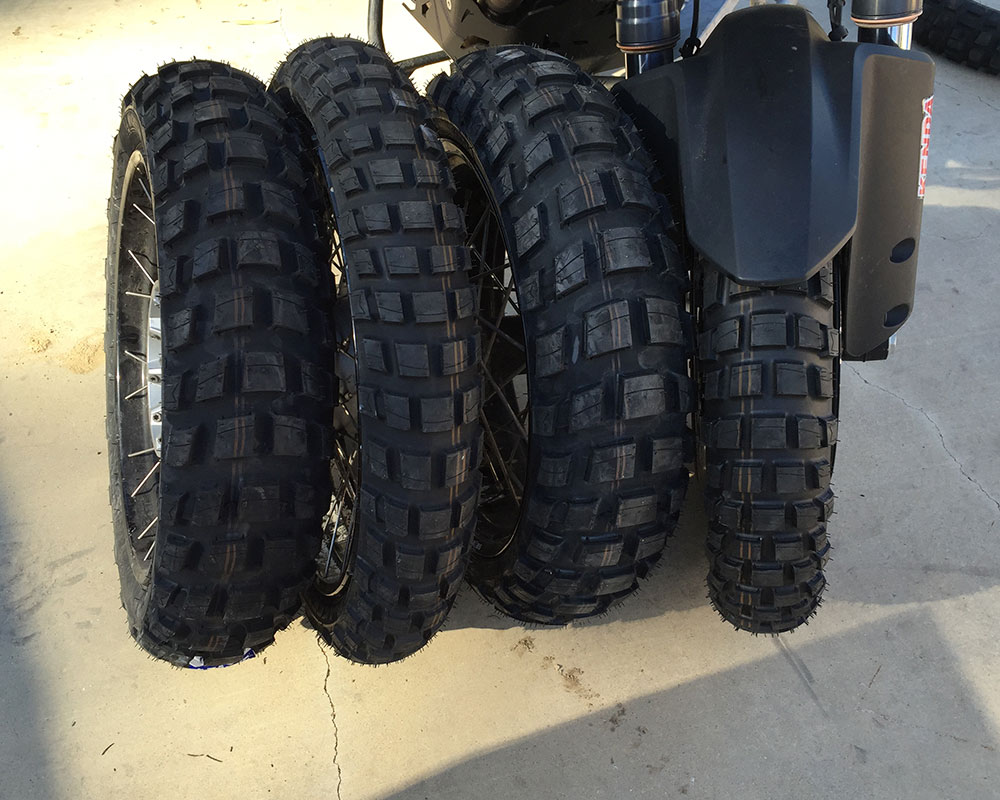

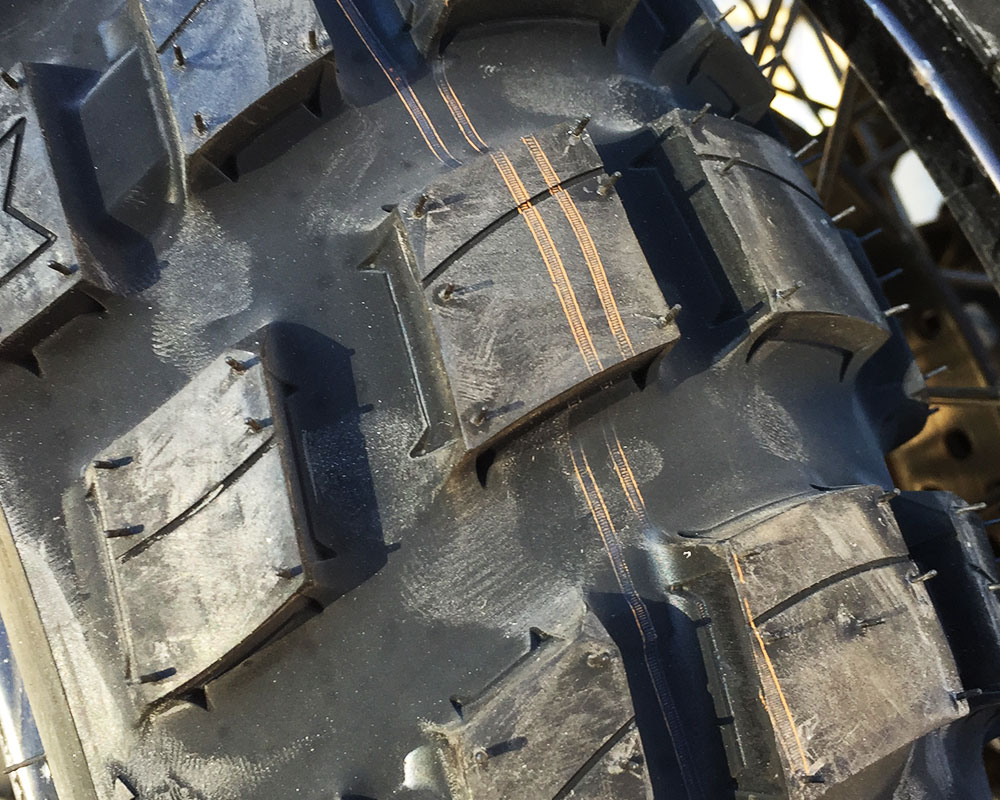

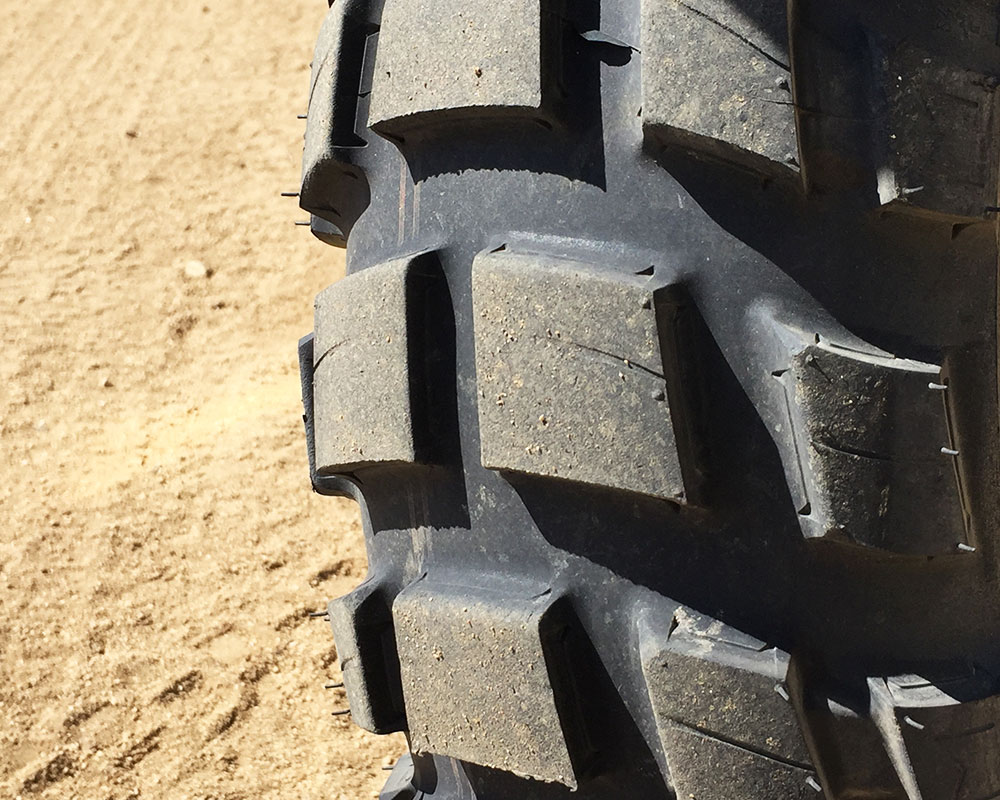


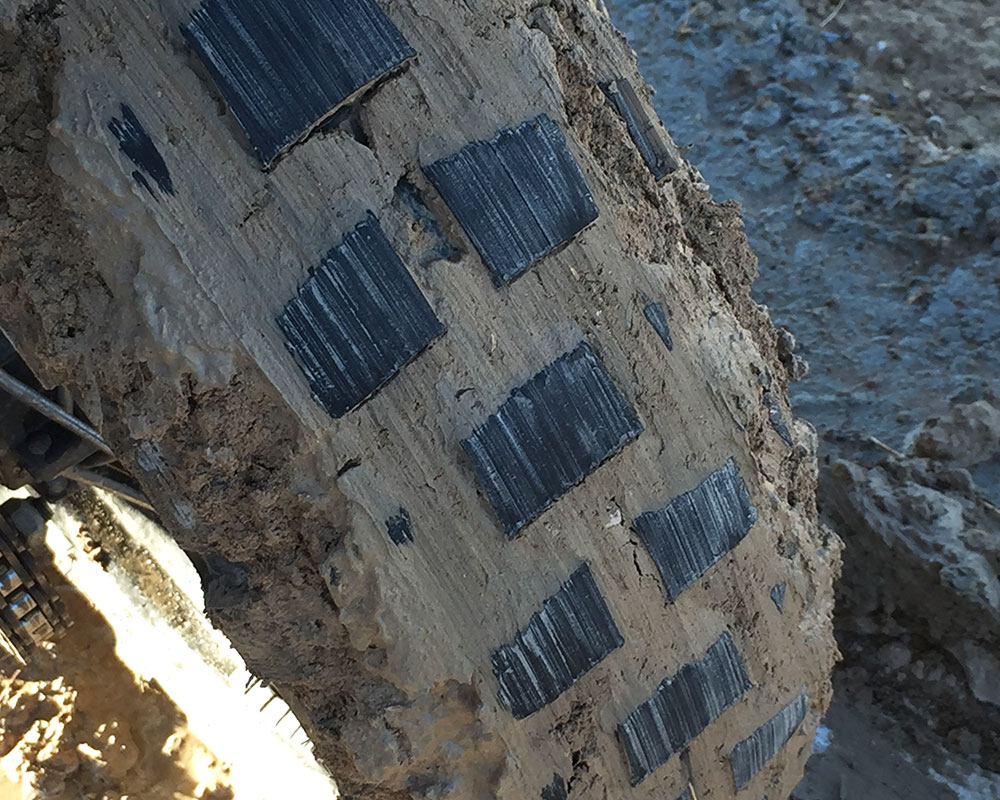
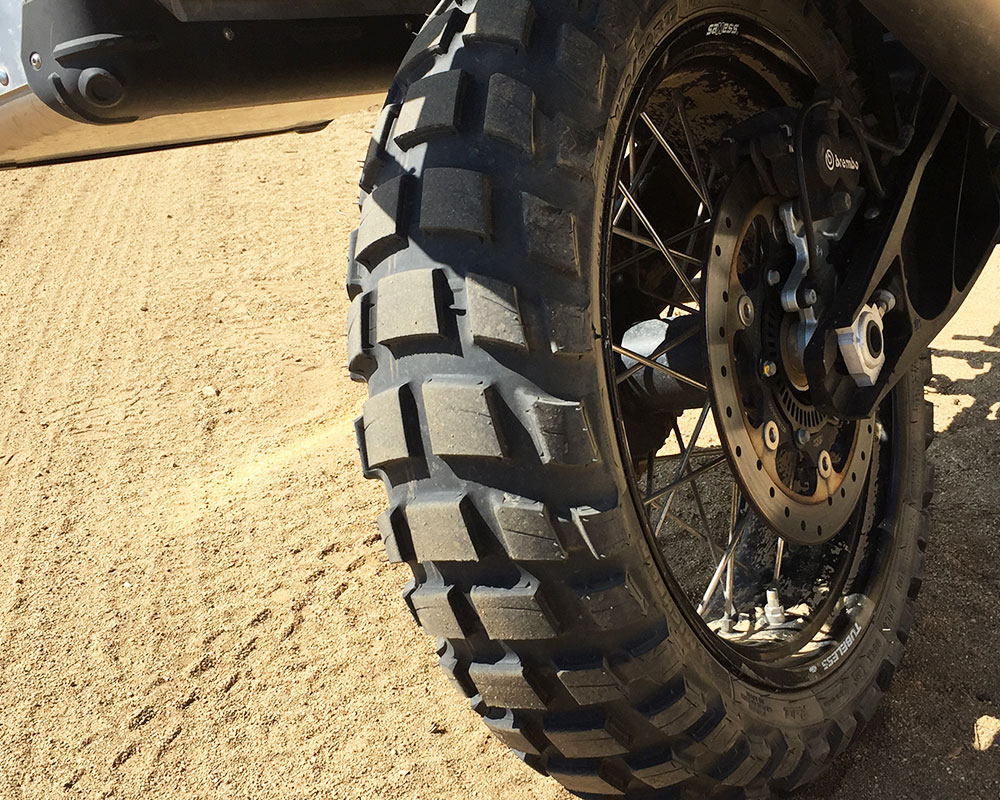
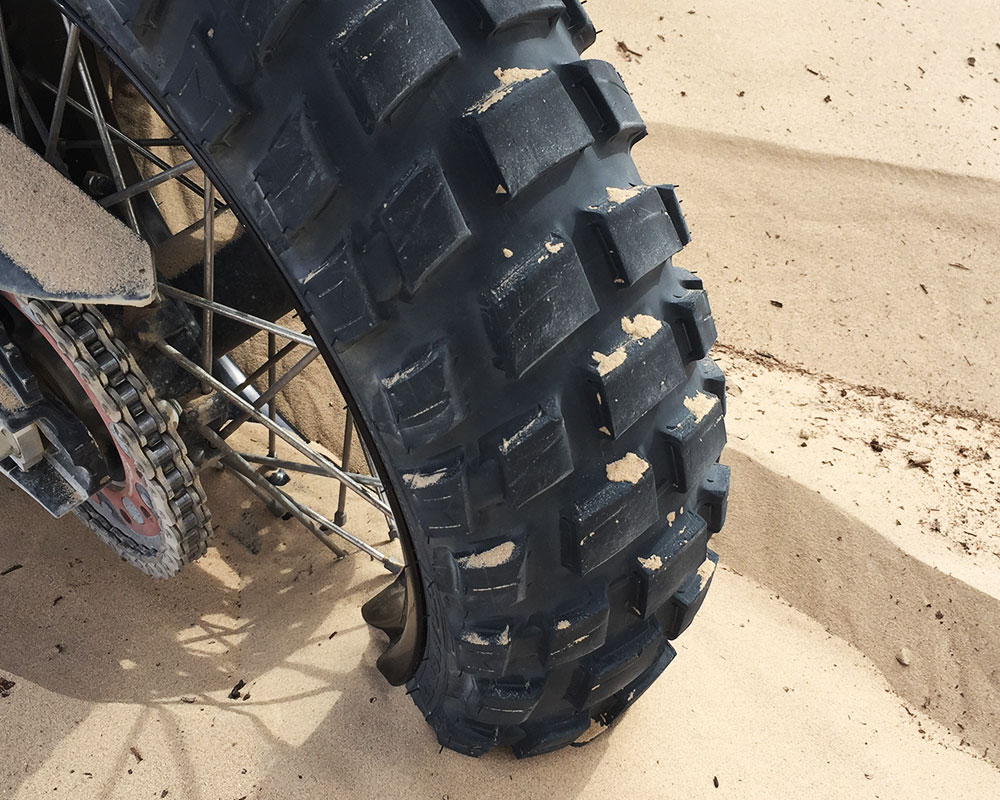
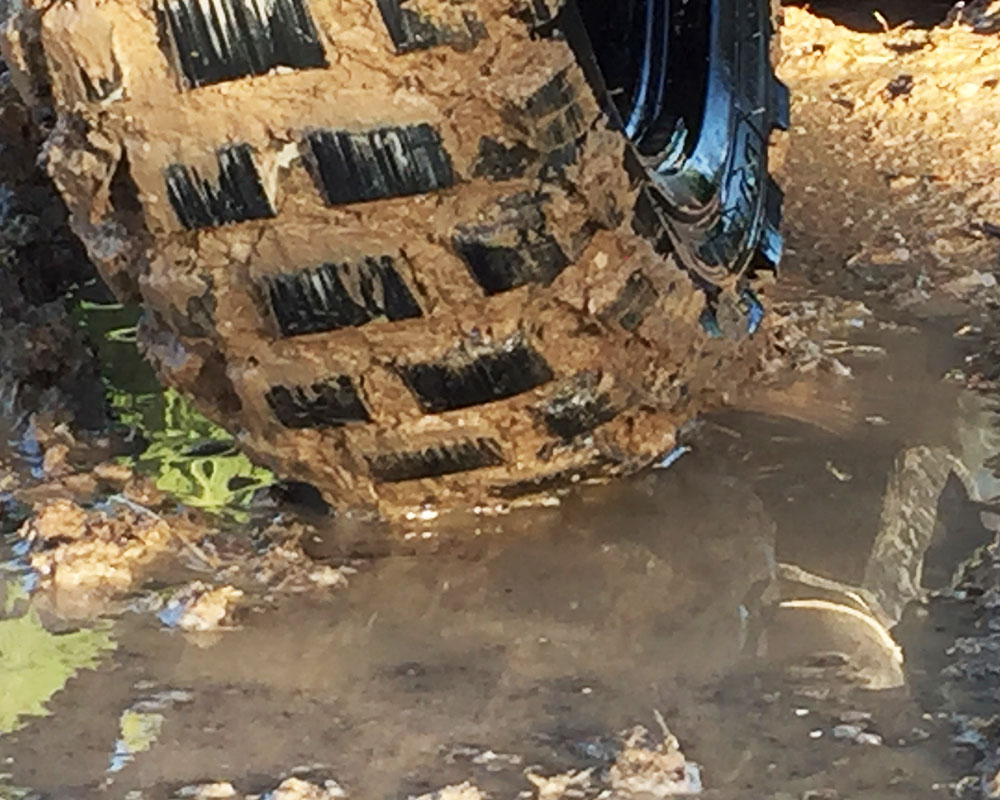
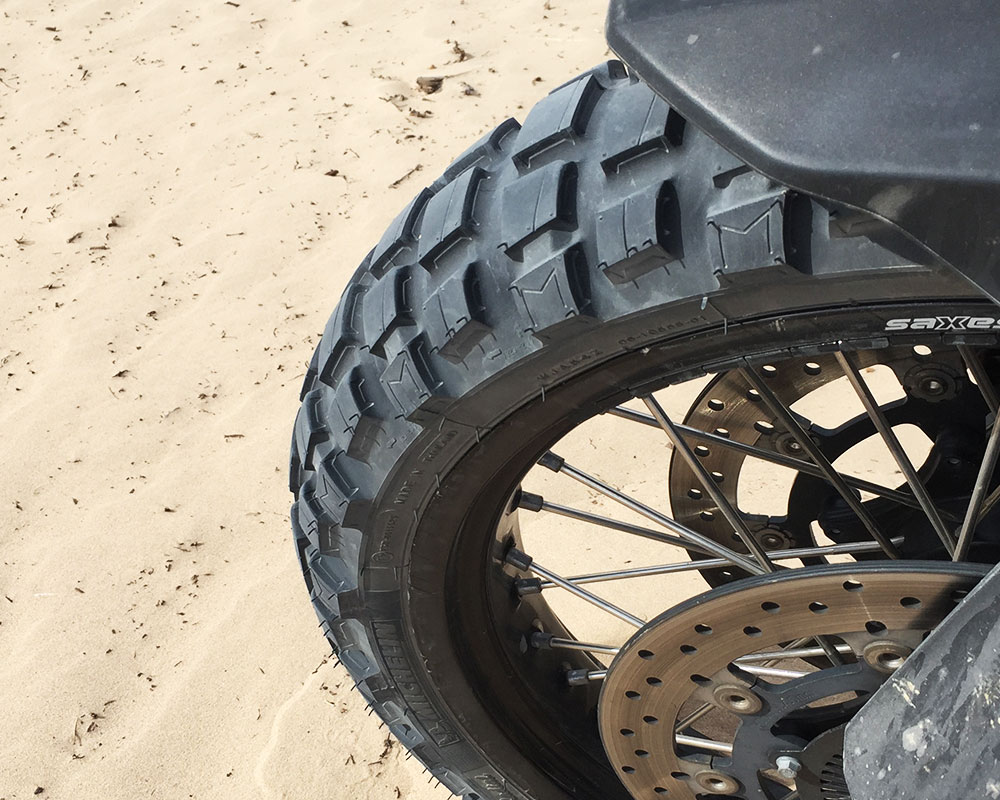
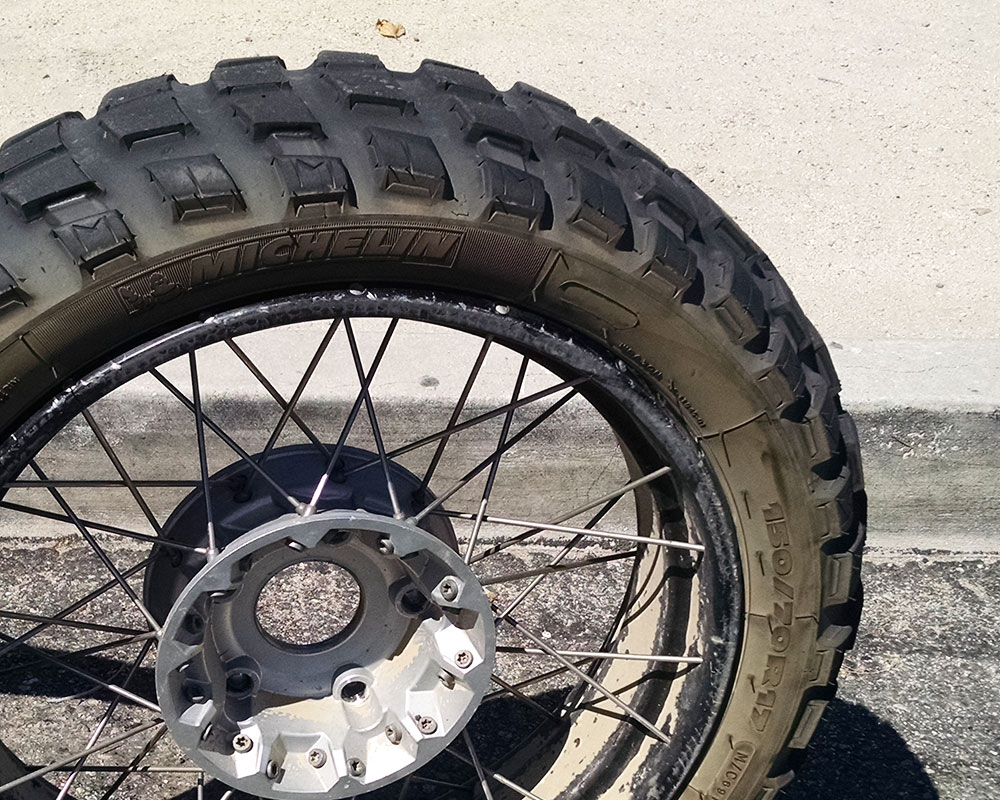
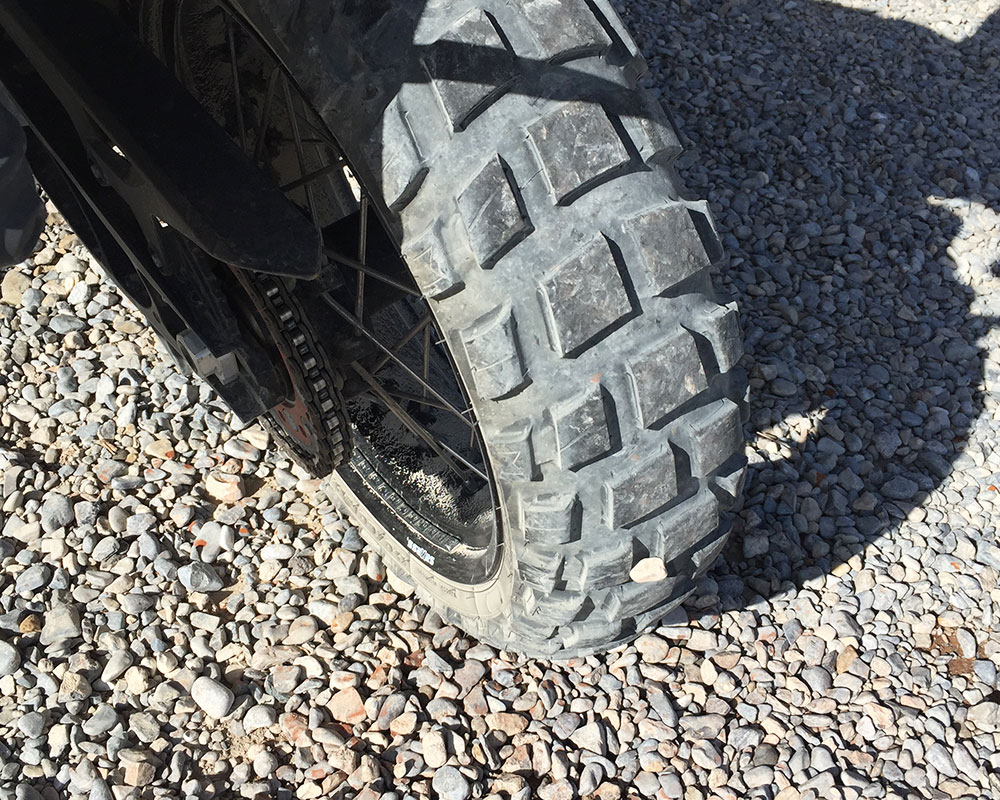



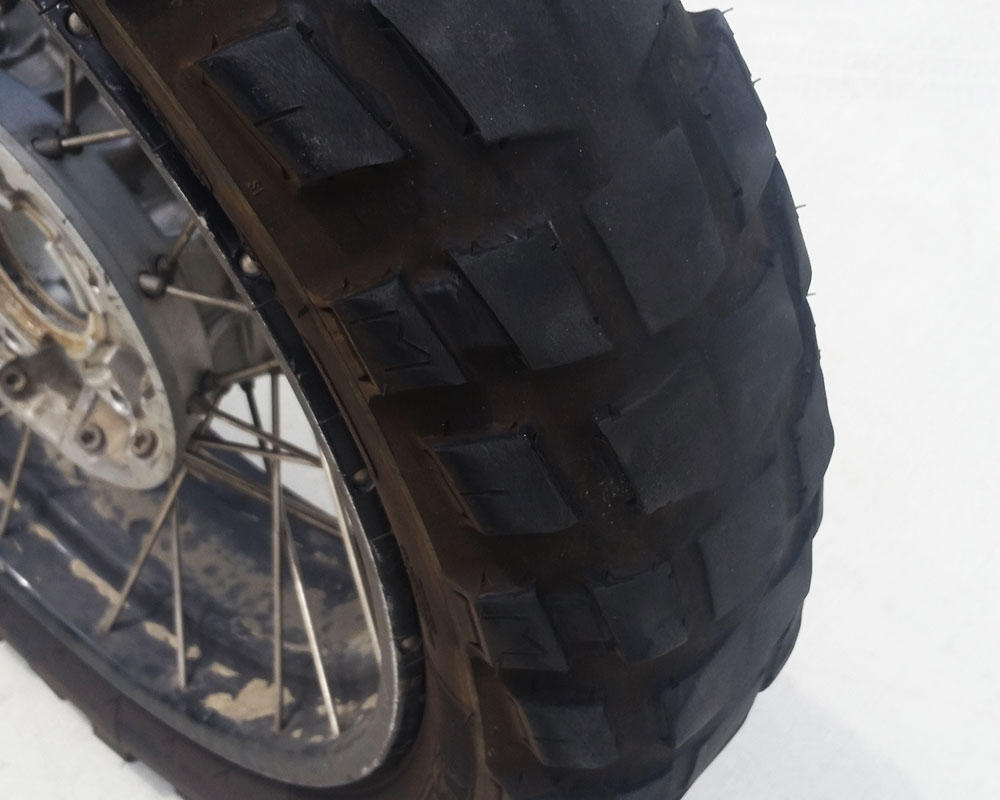
2 Responses to “Michelin Anakee Wild Tires”
Jimmy Lewis
These tires were provided from Michelin before the press launch. I have no reason to believe they were special and I’m sure I’ll have an opportunity to ride them on other bikes soon to verify if they were any different. If you read some of those reviews closely you should not be surprised.
fudgypup
I originally thought perhaps Michelin was testing prototypes with differing levels of hardness because that’s what another tire mfg recently did with a test I was involved in. I also learned this is a tire Michelin’s been developing for a few years. There are reports from the EU of previous versions that were actually softer and didn’t last as long. I think Michelin used that feedback to increase the tread life. But the two red lines on your tires seem to match all the other ones I’ve seen reported so it seems like they are indeed the same.